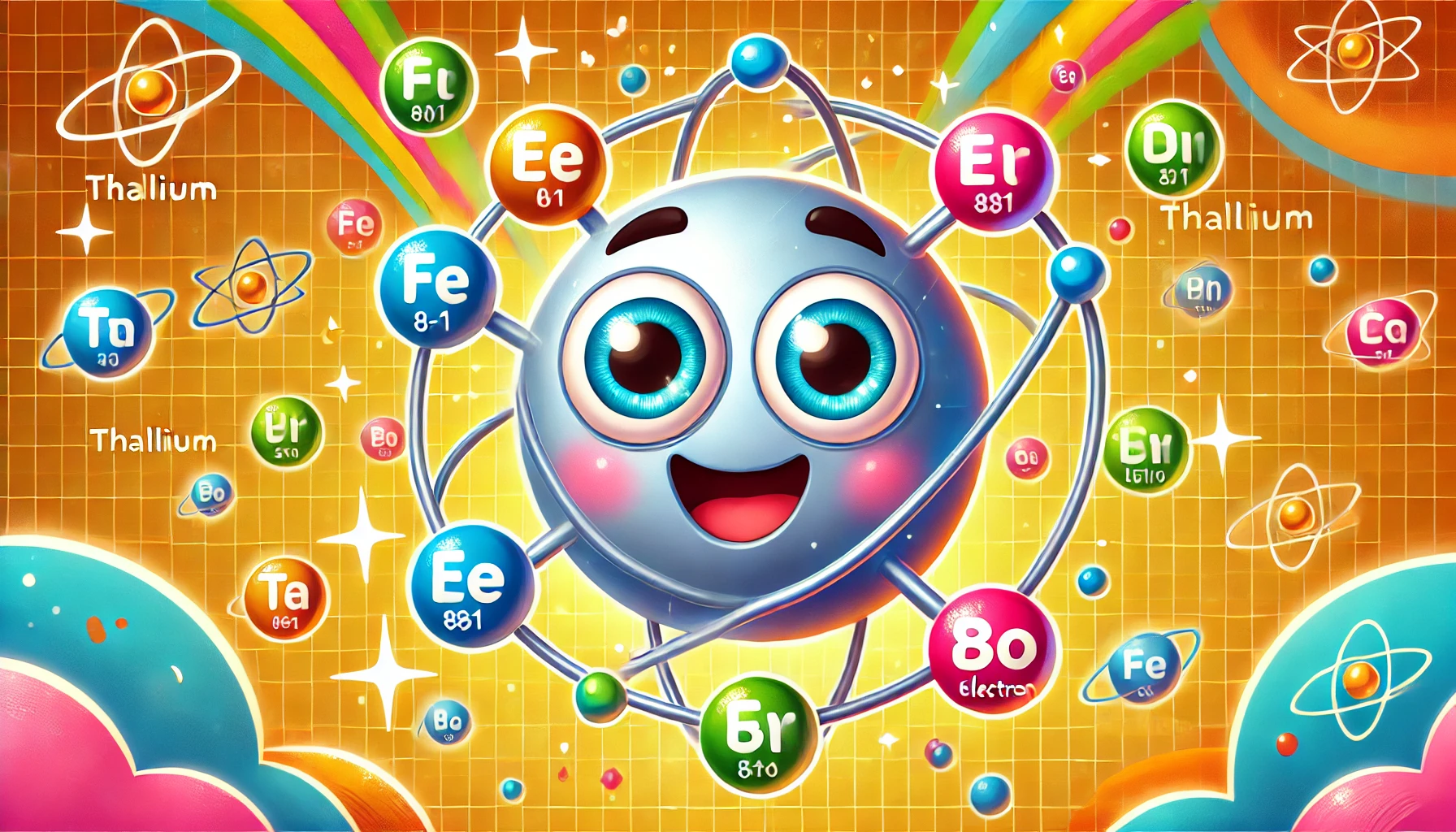Understanding Thallium: Properties, Uses, Health Risks, and Fascinating Facts
Understanding Thallium: Properties, Uses, Health Risks, and Fascinating Facts
Table of Contents
- Introduction to Thallium
- Properties of Thallium
- Uses of Thallium
- Health Risks of Thallium Exposure
- Interesting Facts about Thallium
- Environmental Impact of Thallium
- Conclusion
- References
Understanding Thallium: Properties, Uses, Health Risks, and Fascinating Facts
Introduction to Thallium Thallium is a chemical element with the symbol Tl and atomic number 81. It is a soft, malleable metal that can be highly toxic. Discovered in the 19th century, thallium has been used in various applications, but its toxicity has limited its use in many areas. This article explores the properties, uses, health risks, and interesting facts associated with thallium, providing a comprehensive understanding of this toxic metal.
Properties of Thallium Thallium is characterized by several distinct physical and chemical properties.
Physical Properties
- Appearance: Thallium is a soft, bluish-gray metal that tarnishes to a dull gray color when exposed to air.
- Density: The density of thallium is 11.85 g/cm³.
- Melting Point: Thallium has a melting point of 304°C (579°F).
- Boiling Point: The boiling point of thallium is 1,473°C (2,683°F).
Chemical Properties
- Reactivity: Thallium is highly reactive and can form oxides and hydroxides when exposed to air and moisture. It dissolves in acids but not in alkalis.
- Compounds: Thallium forms various compounds, such as thallium(I) chloride (TlCl), thallium(I) sulfate (Tl₂SO₄), and thallium(I) hydroxide (TlOH).
Uses of Thallium Thallium has been used in several applications across different industries due to its unique properties.
Electronics and Optics
- Infrared Detectors: Thallium is used in the production of infrared detectors and optical lenses due to its ability to transmit infrared light.
- Semiconductors: Thallium-based compounds are used in semiconductors and photoelectric cells.
Medicine
- Medical Imaging: Thallium-201, a radioactive isotope, is used in stress tests to evaluate coronary artery disease. It helps in imaging the heart and assessing its function.
- Treatment of Skin Infections: Thallium compounds have been used historically to treat ringworm and other skin infections, though this use is now rare due to its toxicity.
Industry
- Rat Poison and Insecticides: Thallium sulfate was once widely used as a rat poison and insecticide, but its use has been largely discontinued due to safety concerns.
- Glass Manufacturing: Thallium is used in the production of special types of glass that have a high refractive index.
Health Risks of Thallium Exposure Thallium is highly toxic, and exposure can lead to severe health issues. The element can be absorbed through the skin, inhaled, or ingested, making it a significant health hazard.
Acute Exposure
- Neurological Effects: Acute exposure to thallium can cause severe neurological symptoms, including tremors, convulsions, and peripheral neuropathy.
- Gastrointestinal Issues: Ingestion of thallium can cause nausea, vomiting, diarrhea, and abdominal pain.
Chronic Exposure
- Organ Damage: Chronic exposure to thallium can result in damage to the liver, kidneys, and nervous system.
- Hair Loss: One of the characteristic symptoms of thallium poisoning is hair loss, which occurs due to the disruption of hair follicle function.
Skin and Eye Contact
- Skin Irritation: Direct contact with thallium compounds can cause skin irritation and dermatitis.
- Eye Irritation: Exposure to thallium dust or solutions can cause eye irritation and potential damage.
Interesting Facts about Thallium Thallium has several intriguing aspects that make it an interesting, though dangerous, element.
Discovery
- Discovered in 1861: Thallium was discovered by British chemist Sir William Crookes in 1861 using flame spectroscopy. The name “thallium” comes from the Greek word “thallos,” meaning green shoot, due to the bright green spectral line it produces.
Unique Properties
- Soft Metal: Thallium is one of the softest metals and can be cut with a knife.
- Heavy Metal: Despite being a soft metal, thallium is quite dense and heavy.
Isotopes
- Stable Isotopes: Thallium has two naturally occurring stable isotopes: thallium-203 and thallium-205.
- Radioactive Isotopes: Several radioactive isotopes of thallium are known, including thallium-201, which is used in medical imaging.
Environmental Impact of Thallium Thallium is highly toxic to the environment and can accumulate in the food chain, posing risks to wildlife and humans.
Natural Occurrence
- Abundance: Thallium is relatively rare in the Earth’s crust and is typically found in minerals such as crookesite, lorandite, and hutchinsonite.
- Mining: Thallium is primarily obtained as a byproduct of refining heavy metal sulfide ores.
Pollution and Bioaccumulation
- Environmental Pollution: Thallium can enter the environment through industrial emissions, mining activities, and improper disposal of thallium-containing products.
- Bioaccumulation: Thallium accumulates in the food chain, particularly in aquatic organisms, posing risks to wildlife and humans who consume contaminated water and food.
Conclusion Understanding thallium, its properties, uses, health risks, and interesting facts provides valuable insight into this toxic metal. While thallium has several important applications, particularly in electronics and medical imaging, appropriate safety measures should be taken to minimize exposure and environmental impact. Its toxicity and historical significance highlight the need for careful handling and responsible management of thallium and its compounds.

<ⓒ WizardMedics (wizardmedics.com)>






